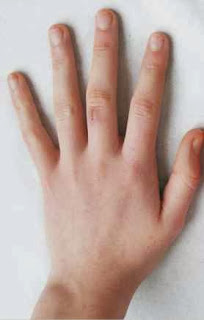
There are little things that can be done during the course of the day in order to render the post-stroke rehabilitation and recovery process more productive.
In fact, particular attention should be paid to the management of the hand affected by hemiparesis.
In many cases, the stroke patient is afflicted by hypertonicity or spasticity in the arm and hand, which
tends to make them flex their elbow, wrist, and fingers, while at the same time closing their shoulder so that their arm adheres to their torso.
For long periods of time during the course of the day, the hand in the previously described situation remains closed, resting on the inner thigh or supported in the lap by the other hand.
We must understand that, in this situation, throughout the course of the day, the hand and brain are not subjected to any stimuli useful for recovering their functionalities, or rather gripping and handling activities.
Furthermore, in this manner the hand is not kept under visual control, and even if the patient is not capable of moving it just now, it is a good idea for you to learn how to position it within the context of the actions that the patient performs during the course of the day.
The Neurocognitive Rehabilitation exercises for the recovery of the ability to grip objects help hemiplegic patients learn to control the movement of their hand starting with spasticity control.
While many patients tend to "nurse" their hand throughout the course of the day in order to make it relax, the exercises offer them useful experiences in terms of perception and awareness, which provide valid daily tools for keeping the hand more "open" and "relaxed".
In order to facilitate this process, it is useful for the patient to spend some time working with the home therapist to position the hemiplegic hand within the context of their daily activities, which must be gradually "taken over" by the patient, even without any visible movements.
Positioning the hand at the table during meals During the course of the day we generally sit down at the table at least 3 times to have meals.
In these situations, the hemiparetic hand is often closed and resting on the thighs, out of the context and away from visual control.
My suggestion, on the other hand, is to position it on the table.
If the hypertonicity is still quite intense, the position will be rather obliged: in fact the bending of the elbow will only allow the hand to rest between the torso and the plate.
Subsequently, based on the improvements obtained with the rehabilitation, the patient will be able to keep their
hand next to the plate, preferably in an open position.
In this way, we will have already "colonized" at least a couple of hours during the course of the day.
Keeping the hand open on a flat surface or on the thigh is equivalent to gripping an object.
What I mean is that when the patient is able to adapt their open hand to the surface of a table, a cushion, or simply their thigh, they're adapting it in relation to an object.
Even if there's no real manipulation, they're entering into a functional relationship with an object.
Ultimately, even the thigh or the table can be seen as objects to be "grasped", and it is therefore useful for the patient to have this experience frequently during the course of the day.
On a wheelchair/chair/couch, use a hard, flat cushion on the thighs
If the patient is sitting down most of the time (with good progress being made with their rehabilitation), preferably on a chair, I recommend placing a hard, flat cushion on the thighs so that the patient can manage
their hemiplegic hand right in front of them, and can keep it open in the gripping position more easily.
In fact it is easier to adapt the hand to a flat surface than the curves of the thigh.
While using the computer This is just an example of one of the activities that might be performed on a daily basis by a hemiplegic patient
at home, but even in this case it's a good idea to position the hand on the work surface. In fact, there wouldn't be much hope for recovering the hand's gripping and movement abilities if it weren't even involved in the operational context. To paraphrase the old saying, "out of sight, out of the brain".
Here you'll find our newsletter, to which an average of 23 patients, family members, and professionals subscribe on a daily basis in order to receive additional free content on the Perfetti Method and stroke recovery. The first report will be titled "10 Things You Need to Know About
Next Steps...
This is should be a prospective customer's number one call to action, e.g., requesting a quote or perusing your product catalog.

